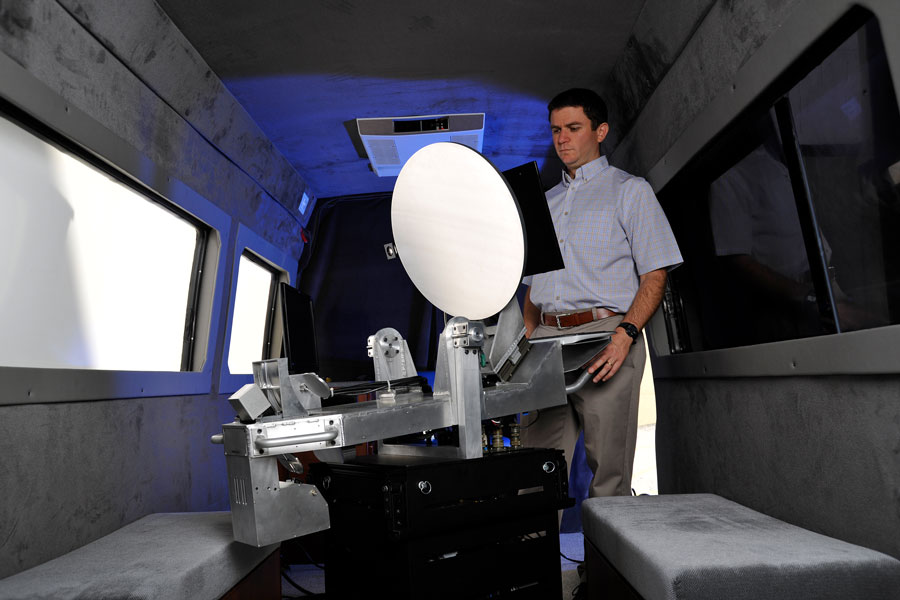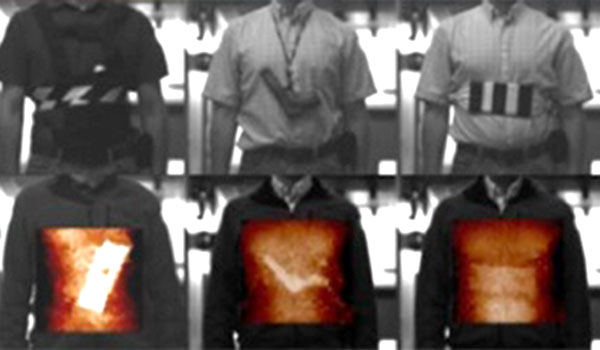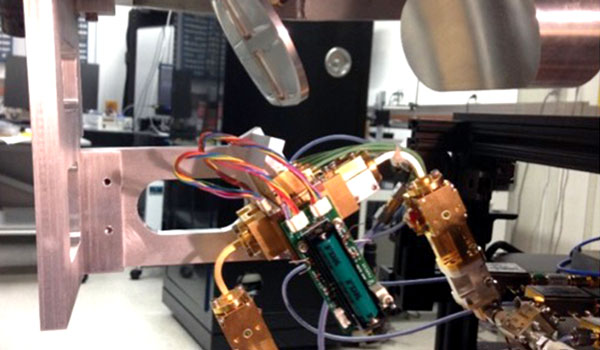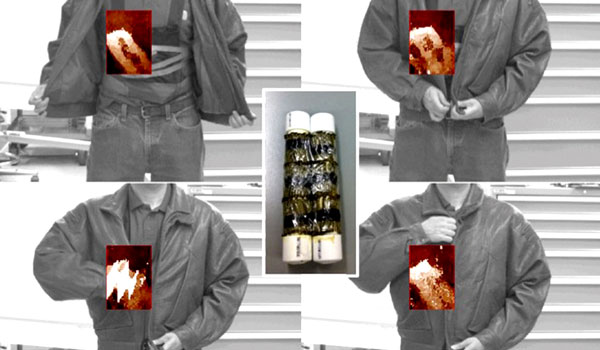Above:
The 670-GHz imaging radar system can generate through clothes imagery in around one second. Real-time threat detection from 25-meter standoff ranges of 1Hx and spatial resolution of better than 1 cm.
Pat Down
"Pat Down" without Putting Down
Ken Cooper - Robert Dengler
Submillimeter-wave components and receivers that have been developed for space applications can also be used for applications on planet Earth. A portable radar system was demonstrated in 2014 that can provide imaging of targets by revealing artifacts behind clothes (thus undetectable with regular cameras). The technology developed at JPL, based on devices from MDL, can work at 340 GHz and 670 GHz, the highest reported frequency for such an application.
In 2014, an 8-pixel radar camera was implemented that allows for real-time imaging of targets. This is a breakthrough and allows one to image a wide scene with centimeter-scale resolution. This system is portable and can be mounted in a vehicle, as was done by MDL scientists to study dust storms in the Mojave Desert. This instrument has scientific applications for studying the dynamics of dust storms or volcanic eruptions on Earth as well as other planets.
The top images are visual while the bottom panels show THz images obtained with a portable imaging radar system.
+ Larger image
Front-end of a 340-GHz imaging radar, showing a linear array of four submillimeter-wave transceivers based on MDL-fabricated Schottky diodes and a compact stack of MDL-fabricated micromachined silicon waveguide.
+ Larger image
The 340-GHz transceiver array has now enabled 8.3-Hz frame rate through clothes standoff radar imaging for personnel screening security applications. Here are four frames of a movie including the real-time overlay of 340-GHz radar imagery of a fake pipe bomb (inset) hidden underneath a heavy leather jacket.
+ Larger image





